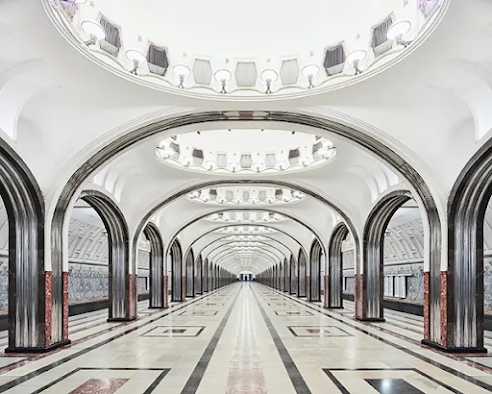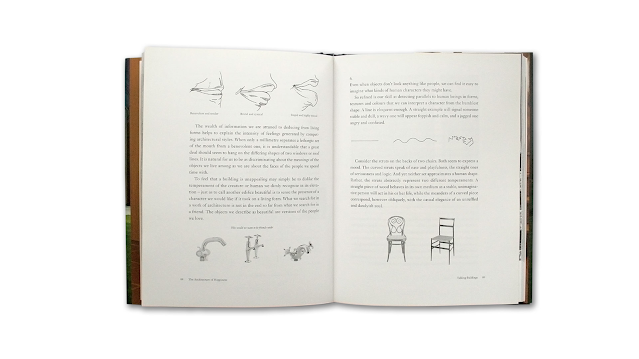From Alain de Botton (2014) The Architecture of Happiness (P88-89)
The pages above are from De Botton's book the Architecture of Happiness. The images from Swiss pseudoscientist Johann Kasper Lavater and his book Essays on Physiognomy (1783). This book analysed painstakingly every facial expression and how it changed the meaning/feeling conveyed. Each had a title such as 'benevolent and tender' or 'brutal and cynical' . Botton cited these in his book as he discusses forma nd how we see human fom in all kinds of objects and in architecture the way a line or a shape cuves can affect our mood, our thoughts, our associations. He states; 'We can judge the personality of objects from apparently miniscule features (a change of a few degrees in the angle of the rim can shift a wine glass from modesty to arrogance)'. (De Botton 2014:87) The reason I was reading the book was that I have always been interested in how architecture has teh ability to affect mood and feeling and often I think modern architecture is unhuman and, for instances, walking through the ultramodern Jubilee Line extension in London, is a cold experience where we become just one of many ants moving through this metal maze.
The creators of this; 'Described as "the biggest architectural sensation of their kind since the Moscow Underground'' (Jubilee Line Extension, LONDON — aLL Design International Architects, 2017). After experiencing the Moscow underground personally, this seemed even more inhuman. People may say it is beautiful but the stations, imposing and ornate overwhelm the citizens. The citizens are just a mass reminding me of the photographs of Titarenko. Taylor write of the Moscow underground: 'At rush hour, to enter the cheap but majestic, efficiently run metro in the center, you pass through the turnstile and are swept into a crowd thronging toward one of the three rapidly moving escalators. You ride down into an arch-ceilinged tunnel so long and deep that stations served as bomb shelters during WWII. Uniformed attendants at the bottom hector passengers through loudspeakers—“Take that purse off the handrail! You there, no running!”' (Taylor, 2015)

Titarenko saw the mass and with slow shutter speed they became like smoke and no longer individual human forms. This is why De Botton's look at Architecture was fascinating as it is about how architecture affects us everyday. One of my own joys in life is to return home to my flat. It sits in the city centre in Leicester, it is small, it is too hot in summer, too cold in winter but it is has everything I want cleanliness, comfort, clean lines and functionality but separate rooms, privacy and safety. Modernity is very keep on open spaces, offices with no privacy, spaces that are crammed with people but make people feel less than people. If everyday we are made to experience this this will have an affect on the soul. I often imagine the perfect space for me to live and work, I imagine how life would be changed by this change in space, in connection with the world. Beauty is very subjective and as De Botton points out:
' the very notion of beauty having come to seem like a concept doomed to ignite unfruitful and childish argument. How can anyone claim to know what is attractive? The creation of beauty, once viewed as the central task of the architect, has quietly evaporated from serious professional discussion and retreated to confused private imperative' (De Botton 2014: 28) Although he states this even if the argument is different and form and functionality may be what is discussed the architect/artist/creator cannot but help themselves impose their idea of beauty into everything they create and in our own homes, if we love them and we want our lives to be improved we impose our imperative all over our private abodes as this little space is our sanctuary.
References
De Botton A. (2014) The Architecture of Happiness, Penguin Books, London.
aLL Design. (2017) Jubilee Line Extension, LONDON — aLL Design International Architects. [online] Available at: https://all.design/news/jubilee-line-extension-london [Accessed 1 August 2022].
Taylor, J., (2015) Moscow: Opulent, Overwhelming, and Pulsing With Power. [online] Culture. Available at: https://www.nationalgeographic.com/culture/article/150322-ngmytown-jeffrey-tayler-moscow-putin-red-square-kremlin-lenin-yeltsin [Accessed 1 August 2022].














